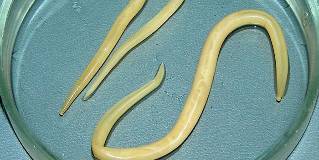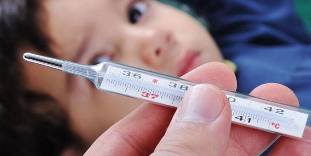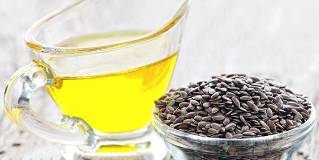The danger of penetration of worms in the body accompanied man from the first days of life. Adults, the elderly, teenagers and children infected via hands, food and water. The problem of worm infestation are easily confused with diseases of the gastrointestinal tract. If you have symptoms of the infant is important for tests and to see a doctor. How to bring worms in a child?

From what appear worms in children
The eggs of the worms group of helminth fall into the child's body through water and food. The main causes of worms eating unwashed fruits and vegetables. Dirty hands, undercooked food, unclean water, flies – all is dangerous. Tapeworms come along with the infected meat, and nematodes are transmitted through the skin by contact with dirty surface (if to walk the earth). When such foods inside can occur enterobiasis (pinworms size up to 2 cm). Roundworm are transmitted via animals.
What is dangerous
Worms in children is dangerous because depriving the body of nutrients. Worms feed on useful elements and produce waste products, have toxic effects: this can lead to the development of allergic reactions. How dangerous are worms in the tissues of internal organs? If parasites in children implanted on fabrics, it violated the integrity of the walls, which can cause bleeding, various diseases (intestinal obstruction), worsening health (frequent illness acute respiratory infections, SARS). The threat to life are worms in the lungs.
Types of worms in children
In the child's body can become damaged by parasites like the small size and big. The incubation period of the helminths may vary from 1 to 1.5 months. It is very important to determine the type of worms, because this will depend on what medications should be taken. Common varieties of worms in children:
- tapeworms: the cestodes tapeworm, the dwarf tapeworm, the tapeworm, Echinococcus;
- segmented worms: Annelida;
- roundworms: Trichinella, pinworms, vlasoglav, nematodes, roundworms;
- koljuchegolovye worms: skrebni;
- flatworms: trematodes, flukes.
How to find out whether the child has worms
Many parents are interested in how to detect worms. Laboratory diagnosis helps identify illness and is a reliable method of determining the helminthiasis. With early detection of infestation immediately prescribed a course of therapy with medicine that helps to protect the baby from unpleasant consequences. In some cases to diagnose the disease can be visually: there are worms in the stool. With the defeat of the body by helminth infections may include the following indications:
- frequent headaches or dizziness;
- grinding the teeth while sleeping (bruxism);
- severe fatigue;
- digestive disorders (constipation or diarrhea);
- excessive strengthening of appetite or none at all;
- pain in the navel or across the abdomen.

A blood test
Prevention is checked every year for worms in children especially if the child goes to kindergarten or school. The main advantage of the ELISA blood test on eggs of helminths – identification of worms at an early stage. When conducting a ELISA test should not eat or drink for about 8 hours, allowed the use of water in small quantities. Early in the morning on an empty stomach take blood from a vein. The doctors examined for the presence of antibodies to parasites. Antibodies – immunoglobulin protein, which is produced in the appearance of parasites in the body. Detection of the protein in the results of the analysis says about the disease.
Can be worms in infant
Parasites can appear in toddlers. To get they could at the time of delivery or, as the older children, via the contact route of infection (hands). The situation is complicated by the fact that babies do not have strong immunity. Their body is not capable of withstanding a load in the form of parasites and depleted two times stronger than an adult. Worms in the infant (8-12 months) may also result in artificial feeding. Doctors say the best prevention of infection is the feeding of mother's milk.
Signs of worms in children
Each variety of worms is characterized by their typical symptoms, but it is possible to allocate the common symptoms of worms in children, among which are: anxiety, irritability, pallor, and dry skin. The baby begins to act up, he appeared circles under the eyes. Seeing them, parents should go to the doctor until it was too late. Among the signs of helminthiasis release:
- lack of weight;
- in the anus is redness;
- fever;
- dry cough and no colds;
- abdominal pain, head.
The first signs
To identify the parasitic infection is not easy. The parents of the child should alert to changes in behaviour: he looks restless and anxious can be a weakness, manifest skin rashes, lowered immunity, worsening appetite or greatly increased. Early manifestations of helminthiasis is a violation of the chair, appear then diarrhea, then constipation. Other first signs of worms in a child:
- sudden nausea;
- increased salivation during sleep;
- attacks of pain in the abdomen of uncertain localization;
- in the anus begins to itch (pinworm);
- fatigue;
- a bad dream.
Temperature
The temperature increase in worms in children is not a primary symptom of infestation, but is considered to be an accompanying symptom. Why the temperature rises? If the body is ascariasis (infestation of parasitic roundworms), the eggs are observed in organs and tissues. A huge number of them causes inflammation in which there is fever. The increases in roundworms is due to muscle pain and swelling of the face. The temperature in worms rises to subfebrile, that is up to 37-37,2°C.
Vomiting
Helminthic infestation in children can cause foamy vomit white. The process develops gradually. The initial phase of the disease lasts 3 weeks. Next there is a dry cough and skin rashes similar to hives. Vomiting occurs at worms in the child, along with other unpleasant symptoms: excessive flow of saliva, anxiety, and nausea. The first appearance of the white foam gag analyze the feces for the detection of traces of worm eggs.

Diarrhea
For many diseases of the gastrointestinal tract characterized by the same symptoms as in helminth infection. The patient may experience constipation, diarrhea, nausea, vomiting. Parasites are irritating to the mucous intestinal inflammation and diarrhea is formed at worms in children. Reliable indicator of worms is a constant feeling of hunger. The first thing you need to do with this symptom is to test the intestinal region. When helminthiasis palpation causes pain, and you can locate the worms.
Treatment of worms in children
If you suspect to take the child to the doctor. The pediatrician will hold a pre-inspection, write out a direction on analyses, will prescribe a plan of treatment, based on history, the child's age, weight, extent of infection. There are many effective drugs against the settled parasites in the body. Treatment of worms in children can occur with medication and traditional methods.
Scheme
To the standard treatment regimen need to undertake preparatory activities. For this pediatrician appoints vegetable oil and harmless sorbents. With their help the body is cleared of infectious waste products of the worms and toxins. Duration of the preparatory phase is from five to seven days, after which, together with the faeces released part parasitic worms. Those who remain, waiting for treatment against worms the medicines are able to cure the disease. How to fight parasitic worms in 3 stages:
- The preparatory process consists of reception 1 tsp before meals flax oil three times a day and sorbent 1 tablet after a meal.
- Then go to a tablet from worms for children prescribed by your doctor.
- After the fight take medications to support the liver.
Drugs against worms for children
How to check and bring the worms in a child? You need to contact the pediatrician who will help you choose effective drugs. Common drugs against worms for children have a paralytic effect on the muscles of the parasites, leading to their destruction, and possess a wide spectrum of action.
Folk remedies
Widely popular methods of treatment is not due to a destructive, but a mild effect on the human body unlike pharmaceutical drugs. When the expulsion of the worms need to be sure that the person is allergic to herbs or idiosyncrasy to the composition, otherwise the treatment may cause harm. What to give a child from worms and how to get rid of them? Herbal treatment of worms in children traditional methods carried out with the participation of infusions and decoctions of the following plants:
- tansy;
- garlic;
- dandelion root;
- red clover;
- yarrow;
- thyme;
- calamus root;
- wormwood.
Diet
Treatment need to be combined with the diet at worms in children, designed for the speedy removal of parasitic worms. Healing children's diet of worms differs from the adult, it has more yogurt containing pieces of fruits and berries. Take care to exclude from the diet of harmful products, sodas, sweets. Examples of diet against worms:
- To get rid of tapeworms (tapeworm wide, bullish or pork tapeworm) can help daily consumption of pumpkin seeds for 7 days on an empty stomach.
- The liver from parasite cleanse diet with the use of rice-water, corn or pumpkin porridge, berries, vegetables, fruits.
- Remove manifestations of helminthiasis in the blood will help nuts, brown bread (crust), sea Kale.
Prevention of helminthiasis in children

The main prevention of worm infestation is in compliance with the right measures of personal hygiene. Not all adults can look after themselves, but what about the children? It is the duty of parents to teach and train the little man to personal safety, which is preventive measures not only by worms. To reduce the risk of infection with parasitic worms need:
- before eating, wash hands;
- pour over boiling water, or simply wash served fruits, vegetables, citrus, berries, herbs;
- drink only boiled, mineral or treated water and not raw;
- there are quality products;
- to protect themselves from insects;
- do not bathe in unfamiliar places, especially in the summer.



































